Chinese curiosities, Asian Studies, Taoism, Shamanism, and everything in between.
Don't wanna be here? Send us removal request.
Text





Figurine of a man holding a bird from the late Shang. Btw, we learned that shoes with curved toes were already in trend back then.
Sanxingdui Museum, Guanghan, Sichuan.
Photo: © Makara·杉
#ancient china#chinese culture#chinese art#chinese mythology#shang dynasty#chinese history#shang bronze#bronze design#bronze art#bronze#bronze sculpture#unique#bronze statue#bird art#bird
87 notes
·
View notes
Text
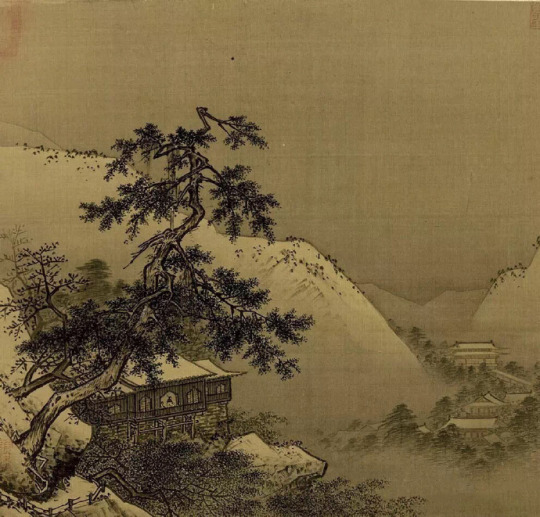
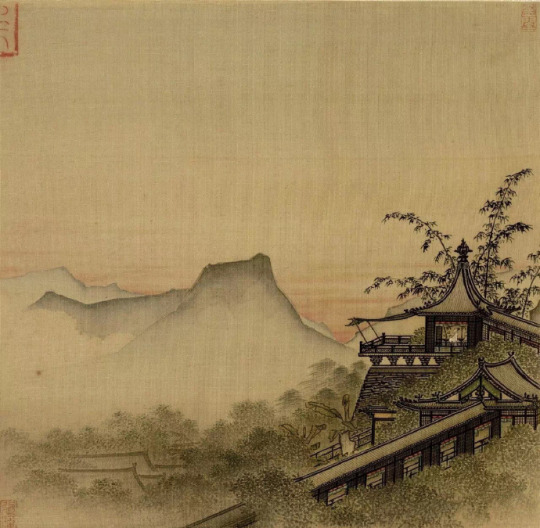


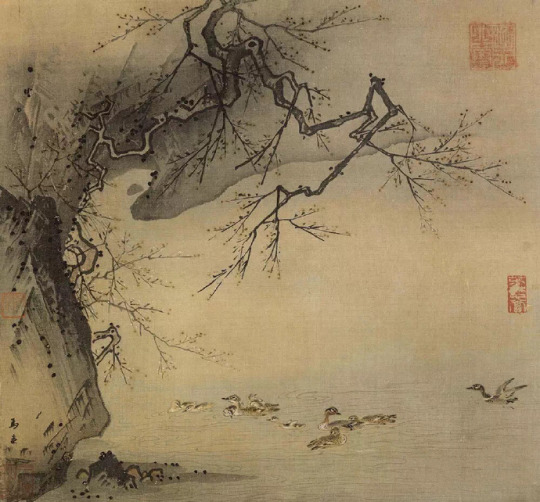


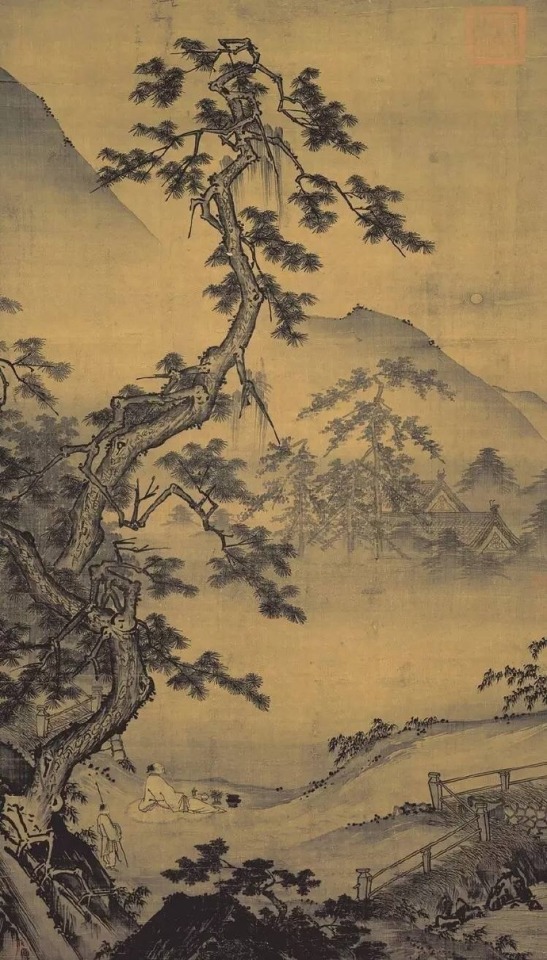

Innuendo Arts by Ma Yuan
Absorbing Li Tang’s (李唐) painting methods, Ma Yuan (馬遠), a Southern Song artist from Shanxi, created his own distinct style.
His painting departs from the usual rich in detail landscapes. Just a hint remains: an open contour, outlined in part. The scene in focus is elaborated; the rest faints into a barely marked space.
#ancient china#chinese culture#chinese art#Ma Yuan#chinese painting#song dynasty#landscape#mountains#nature#landscape art#trees#landscape painting#chinese ink#ink painting#ink#ink art#ink drawing#watercolor#chinese calligraphy
227 notes
·
View notes
Text









Relic Prohibited From Displaying Abroad: Northern Wei Dynasty Painting
Painted screen covered with vermilion lacquer from the tomb of Sima Jinlong (司馬金龍).
The outlines are finely drawn in black ink. A dazzling riot of colors distinguishes this specimen from those of previous centuries.
The painting illustrates narratives about female virtues and filial piety from Han dynasty Liu Xiang's (劉向) Confucian classic “Biography of Exemplary Women” (列女傳).
The top section from the well-preserved part in the photo depicts Emperor Shun's story of filial piety.
The second represents Three Queens of Zhou dynasty – Tai Jiang, Tai Ren and Tai Shi – exemplary mothers and wives (whose historicity remains in doubt) included in later collections of moral precepts.
The third section portrays Lushi Chunjiang and Chunjiang’s daughter.
The bottom one illustrates the episode when the Consort Ban (班婕妤) refused to accompany the emperor in a palanquin so as not to distract him from the thoughts about the state welfare.
The screen was unearthed in Shijiazhai (石家寨) village, Datong, Shanxi in 1965. It is surprising that many precious artifacts remained in the burial pit, despite repeated plundering. We can chalk it up to the ignorance of the thieves.
The board is 82 cm long, 40 cm wide and 2.5 cm thick. The two pieces of the lacquer-painted screen are connected by mortise and tenon joint.
Due to its exceptional fragility and value, the panel is not allowed to be exhibited abroad. Despite all the museum care, the second part of the diptych is not so well-preserved. The tomb has been repeatedly flooded over the centuries, and the dampness has taken its toll. The vermilion screen is stored in Datong Museum (大同市博物館), Shanxi. The original is rare on display for several days only, the rest of the time it is replaced by a replica. Pictured is the original.
#ancient china#chinese culture#chinese art#chinese history#chinese painting#painting miniatures#painting on wood#Northern Wei dynasty#lacquer#lacquerware#ancient tomb#tomb art#vermilion#artifact#unique#relic#han dynasty#burial site#burial#chinese customs
78 notes
·
View notes
Text
Subtle Phenomena In Inner Alchemy: Signs Of Achievement And Temptations
In Taoism, as in Tantra, there are so-called “signs of achievement” indicating the progress of the adept. Along with them, spectacular subtle phenomena and temptations coexist with the cultivation. These accompanying mystical experiences are described in all Taoist currents. The article below by Stephen Eskildsen gives their interpretation in the one of the major schools, Quanzhen (全真, Way Of…
#ancient China#Chinese mythology#inner alchemy#meditation#neidan#qigong#spirituality#Taoism#Taoist alchemy#Taoist healing#Taoist magic#Taoist meditation#Taoist metaphysics#Taoist practices
8 notes
·
View notes
Text









A miniature group representing the Ming dynasty royal guard of honour.
Figurines surround the sedan chair in the center. Besides the guards, the escort includes officials, male and female servants, and a tiny philharmonic orchestra.
Unearthed from the tomb of King Yizhuang (益莊王) (1498-1556) in Nancheng, Jiangxi. Now in Jiangxi Museum (江西省場館).
#ancient china#chinese culture#chinese art#chinese history#western han dynasty#han dynasty#chinese miniatures#clay sculpting#miniature art#minatures#dioramas#miniature#tomb art#ancient tomb#clay figurines#clay#clay art#ceramic art#pottery
83 notes
·
View notes
Text










Warring States Beverage Fridge of Marquis Yi of Zeng
Judging by the burial items, Marquis Yi, this Chinese Petronius, was a socially inclusive person and managed to keep a positive outlook on life even under the Warring States.
This antique beverage fridge was found in 1978 among the treasures of the Leigudun Tomb No.1, Suizhou, Hubei.
A smaller vessel (Fou 缶) with rice wine was placed inside Jian (鑑) bronze frig, fixing all with three hooks on the bottom, and ice cubes were poured between the walls. Cooled rice wine was filtered and scooped up with ladles when needed without removing the inner container.


Two such beverage fridges were discovered in the burial site. Like some other items, Jian frig is signed “For the perpetual use by Marquis Yi of Zeng.” In his quirk, the Marquis is not unique: beverage fridges have been common since at least the Spring and Autumn period. However, for few they were such an essential utensil to take it with to the afterlife.
Total weight (Jian + Fou) is 168.8 kg. On display in Hubei Provincial Museum (湖北省博物館).
Photo: ©湖北省博物馆藏
#ancient china#chinese culture#chinese art#chinese history#warring states era#warring states period#ancient tomb#unique#Marquis Yi of Zeng#chinese nobility#bronze design#bronze vessel#bronze art#bronze#limited edition#zhou dynasty#refrigerator#fridge#beverage fridge
144 notes
·
View notes
Text

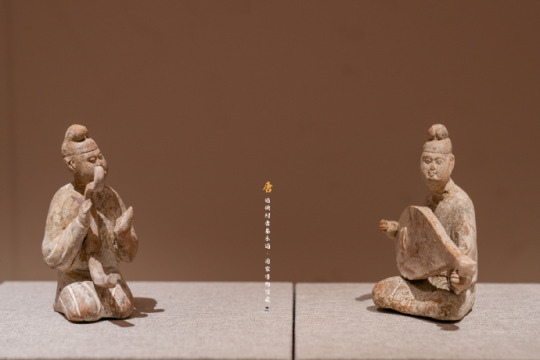
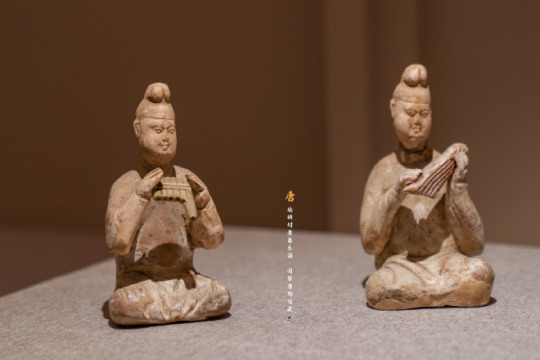
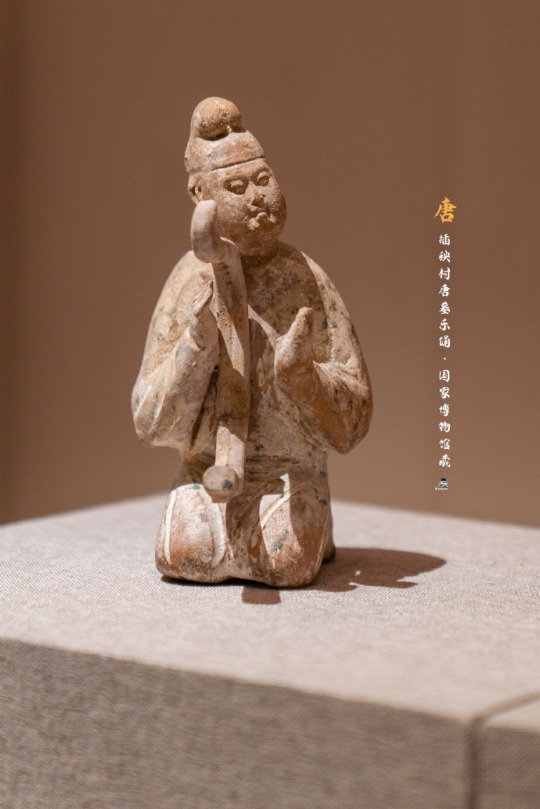



Terracotta musicians unearthed in 1955 from the Tang tomb in Chayang village (插秧村), Xi'an, Shaanxi.
The instruments played include konghou (箜篌), clapper (拍板), flute, panpipe, pipa (琵琶) and sheng (笙).
In the collection of the National Museum of China (中国国家博物馆).
Photo: ©国家博物馆
#ancient china#chinese culture#chinese art#chinese history#chinese miniatures#miniature art#sculpture art#miniature#terracotta#tang dynasty#chinese music#music#flute#fluteplayer#pan flute#traditional Chinese music#clapper#tomb art
80 notes
·
View notes
Text
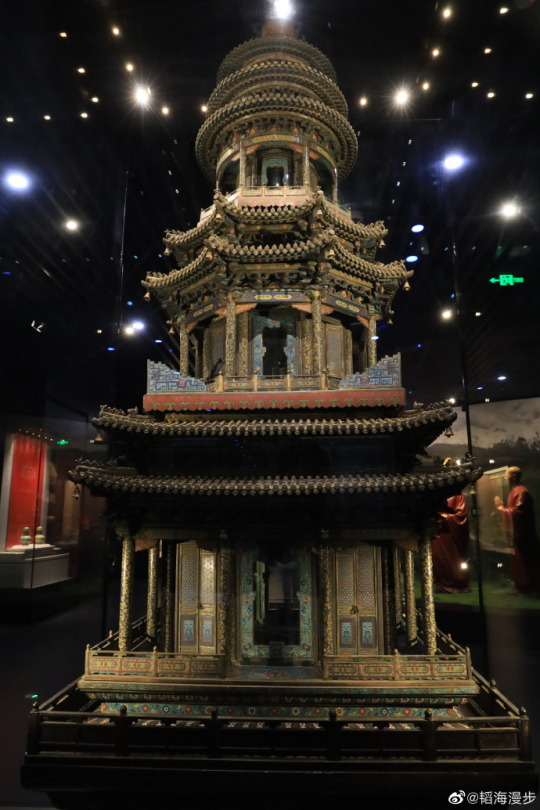







Exquisite enamel pagoda from the Qing dynasty Palace Manufacturing Office (造辦處), a special institution to fashion articles for the Imperial Court, established during the reign of Emperor Kangxi.
From the very beginning, the pagoda was placed in the Xumi Fushou Buddhist Temple (須彌福壽之廟) in Chengde, Hebei. However, later, in order to preserve the fragile enamel from the corrosive impact of natural factors, it was moved to the building. Now on display in Chengde Museum (承德博物館).
Photo: ©韬海漫步
#ancient china#chinese culture#chinese art#qing dynasty#chinese architecture#chinese temple#buddhist temple#buddhism#buddhist#religious art#enamelware#enamel#kangxi#pagoda#miniature art#chinese miniatures
56 notes
·
View notes
Text

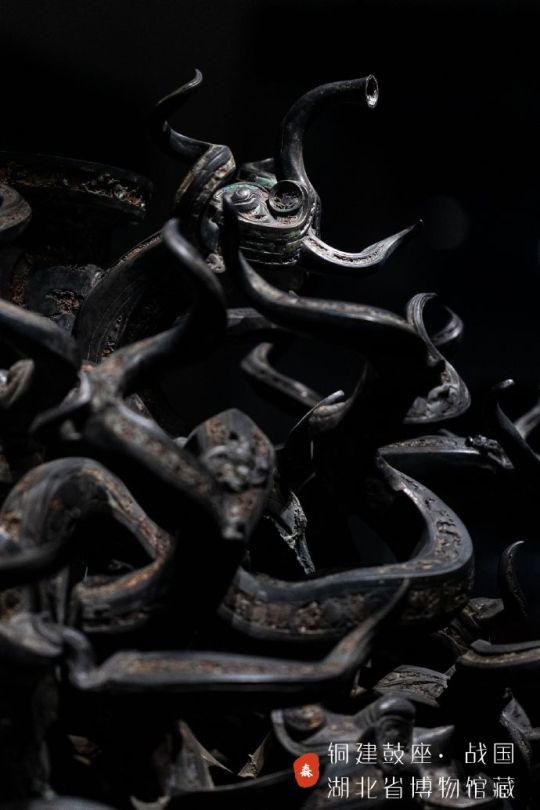





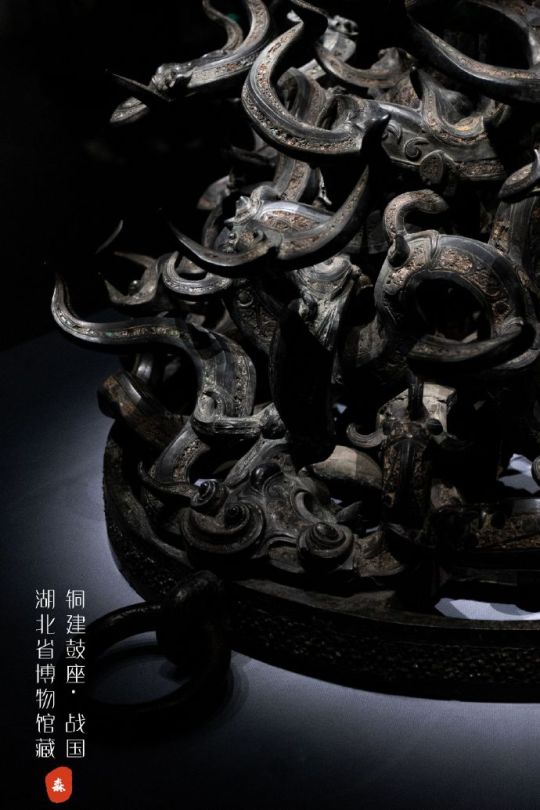

Serpentine Drum Stand From The Warring States Period
Another surrealist masterpiece. Artifacts like this make Warring States one of my favorite eras.)
The stand is conceived for the Jian type drum (建鼓), a double-headed drum with a pole, fixed on this base. The drum was skewered on a pole, just like an olive on a toothpick:
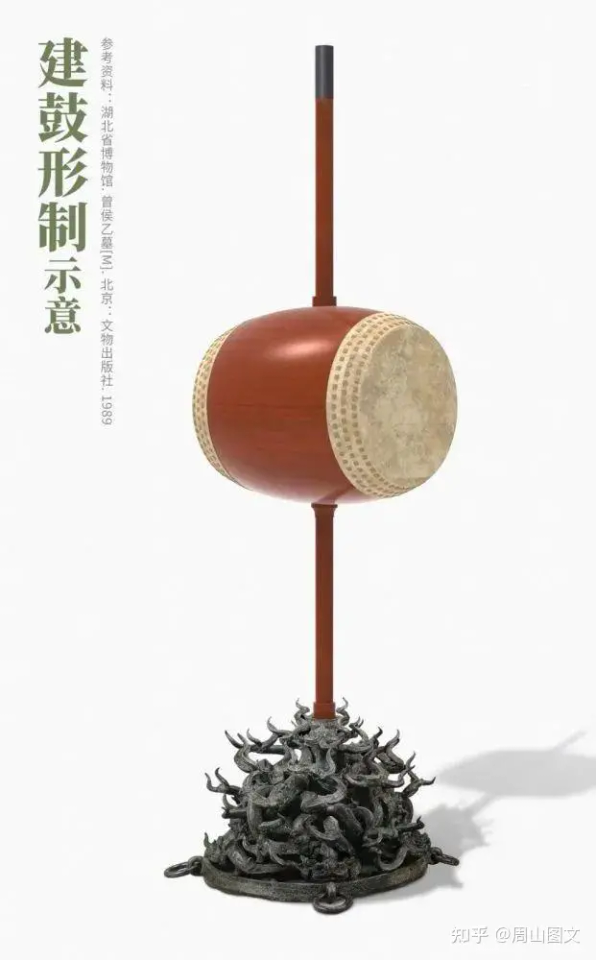
The top of the pole was often ornate with fluttering feathers (羽葆), the structure itself being reminiscent of the archetypal Axis Mundi and the World Tree. The motif of ascent to the heavenly realms thanks to drumming is characteristic of shaman beliefs.

Han dynasty relief depicting the Ascension to Heavens. A pole with a two-headed Jian drum is portrayed in a shamanic manner, as the World Axis, piercing the realms. Jiangsu Normal University Museum (江蘇師範大學博物館).
The slot is surrounded by sixteen principal serpentine beings with progressing in fractal minor ones. They were inlaid with now lost turquoise.
Although intricate, the base is symmetrical. Four rings along the contour were used as carrying handles. The weight of the device is impressive: more than 192 kg. Unearthed in 1978 from the tomb of Marquis Yi of Zeng (Leigudun Tomb No.1 ), Suizhou, Hubei. On display in Hubei Provincial Museum (湖北省博物館).
Photo: ©湖北省博物馆藏
#ancient china#chinese art#chinese culture#chinese history#warring states era#warring states period#ancient tomb#Marquis Yi of Zeng#surrealism#chinese music#bronze design#bronze art#bronze#unique#mythical creatures#turquoise#serpentine#serpent#dragon#dragon art#zhou dynasty#Chinese drum#drums#drum
97 notes
·
View notes
Text











Twenty-eight Constellations From The Temple Of Supreme Talisman
Pottery figurines of the Twenty-Eight Constellations from the Ziwei Pavilion (紫薇閣) in Supreme Talisman (Taifu) Temple (太符觀) are quietly chatting.
The Taoist temple itself, located in Fenyang (汾陽), Shanxi, was built in the fifth year of the Jin dynasty (1200). The Jade Emperor is enshrined in the main hall. The other halls on the both sides are dedicated to the Holy Mother of Houtu (后土聖母), aka Xiwangmu, The Queen Mother of the West, and to the Five Sacred Mountains (五嶽).
The figurines, just like some of the buildings, date back to the Ming dynasty. Each is about half a meter high. Of the original number, eight have been lost over the centuries. The rest were moved to the Shanxi Museum (山西博物院).
Photo: ©雪夜魚舟
#ancient china#chinese culture#chinese art#taoism#chinese mythology#taoist practices#taoist magic#ming dynasty#jin dynasty#pottery#ceramic art#ceramic#chinese miniatures#miniature art#sculpture art#clay sculpting#miniatures#religious art#chinese temple#daoism#taoist#taoist immortal#chinese astrology#astrology#zodiac#constellations
126 notes
·
View notes
Text






Abandoned Ming dynasty rural graveyard, Zhejiang.
Photo: © Aier闽
#ancient china#chinese culture#chinese architecture#ming dynasty#graveyard#cemetery#grave#gravestone#ancient tomb#tomb art#old cemetery#landscape#scenery#old china#chinese customs#chinese folk religion
406 notes
·
View notes
Text









Ancestral Hall: Good Old Classics
The Mei (梅) family ancestral hall of the Wanli period (1572–1620), Ming dynasty. Located on the right side of the main building in the Shisi Temple (時思寺) in Jingning County, it is representative of all buildings with this purpose.
Mei family temple is oriented to the East and includes the Ancestral Gates (祠門), the Front Hall (前廳), the Entrance Hall (序倫堂) and the Main Hall (紙正堂). Compared to the neighboring structures of the Song and Yuan dynasties, it seems more ethereal. By reducing the number of bulky columns and using more roomy arches, the architects managed to free up a lot of space.
Photo: ©鸿慈永祜
#ancient china#chinese culture#ancestral hall#ancestral shrine#chinese architecture#song dynasty#yuan dynasty#wooden architecture#wooden buildings#chinese customs#chinese folk religion#chinese temple#temple architecture#rural#countryside
57 notes
·
View notes
Text









Ming Covered Bridge in Old Lishui
This Ming Dynasty covered Huguan Bridge (護關橋), located not far from our ancestral home in Lishui (麗水), is representative of all facilities of its kind. Like most contemporary buildings, this structure has metamorphosed and evolved over the centuries.
Roofed bridges are a typically Chinese architectural phenomenon. Despite their reduced romanticism compared to open ones, covered bridges are exceptionally durable and much more human-friendly.) The preservation of the wooden structure is impressive, given the dampness from the river and the usual Zhejiang weather mood. The very name of Lishui is roughly “Beautiful Water”, it's everywhere.
A curious feature of Chinese bridges is that they often include a tiny shrine. In this case, it is a home-like altar dedicated to Guan Yu.
Photo: ©张霂佑tago
#ancient china#chinese culture#chinese history#qing dynasty#ming dynasty#chinese architecture#old china#chinese customs#chinese folk religion#guan yu#scenic#landscape#scenery#countryside#wooden architecture#wooden buildings#bridge#covered bridge
104 notes
·
View notes
Text








Ancestral Hall of the Tiger Talisman in Fujian
One of those architectural gems that are scattered throughout the Chinese countryside: the Ancestral Hall of the Tiger Talisman (虎符祖殿) aka Huyan Ancestral Hall (虎岩祖殿) or Hufuyan (虎符岩) in Nanfeng (南豐村), Xinqiao, Fujian.
Built in the Song dynasty and rebuilt in the 16th year of Jiajing in the Ming dynasty (1537), the complex covers an area of about 1800 square meters. This temple is dedicated to the Taoist Leifa deity Zhang Shengjun (張聖君), the Master of Five Thunders. The papers with talismanic inscriptions are stuck under the ceiling.
Photo: ©劉江嶺
#ancient china#chinese culture#chinese art#chinese architecture#ming dynasty#song dynasty#wooden architecture#wooden buildings#chinese mythology#taoist magic#taoism#taoist practices#chinese customs#taoist sorcery#taoist#chinese folk religion#chinese temple#Taoist temple#religious art#temple architecture#thunder rites#Leifa#ancestral hall#ancestral shrine
104 notes
·
View notes
Text









Old Chinese houses are an inexhaustible creative space in terms of wooden interiors. To me, something alike is associated with childhood memories of a countryside house in Zhejiang.
Photo: ©遗产君
#ancient china#chinese culture#chinese history#chinese architecture#ming dynasty#qing dynasty#old china#chinese customs#wooden architecture#wooden buildings#wooden interior#vintage interior#interiors#interior design#interior architecture#interior#interior decor#interior inspiration#woodworking#wood carving
2K notes
·
View notes
Text








Laughing Buddhas From The Flying Peak
Vivid figures of Buddhas and Bodhisattvas carved in the rock on the Flying Peak, Feilai Feng (飛來峰石窟) in the Wulin Mountains (武林山), Zhejiang.
Their cheerfulness in no way contradicts the solemn and misty ambiance of the Feilai Feng Grottoes themselves. Limestone peak looks alien in the surrounding mountain landscape, so there is an opinion that it flew here by the power of Buddhist wonder-workers. The main cave is dedicated to the Bodhisattva Guanyin. Due to a natural crack in the ceiling, a radiant halo surrounds the statue.
The carvings are from different periods and date from the Tang to the Ming.
Photo: ©俊灵-
#ancient china#chinese culture#chinese art#buddha#buddhist#buddhist deities#buddhism#buddhist temple#guanyin#chinese mythology#观音#religious art#rock carvings#buddha statue#bodhisattva#chinese folk religion#tang dynasty#song dynasty#yuan dynasty#ming dynasty
318 notes
·
View notes
Text
Book of Master Celestial Seclusion
The Book of Master Celestial Seclusion (天隱子) is one of the influential manuals of the Shangqing school, included in the Tang Golden Age corpus. The source is attributed to Sima Chengzhen (at least the preface). Even if this attribution is not perfectly accurate, it is evident that the treatise comes from the same Taoist circle and develops his emblematic method of “Sitting in Oblivion.” Continue…

View On WordPress
#ancient China#Chinese culture#Chinese mythology#Chinese philosophy#internal alchemy#Maoshan#neidan#Shangqing#Tang dynasty#Taoism#Taoist meditation#Taoist metaphysics#Taoist practices
6 notes
·
View notes